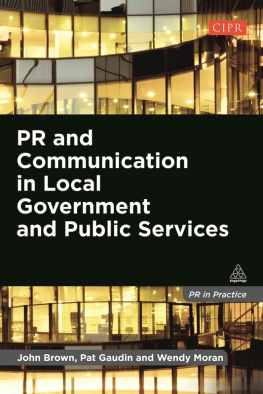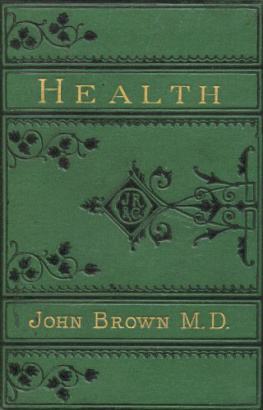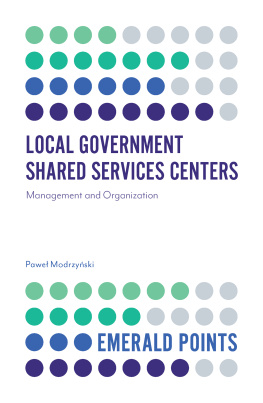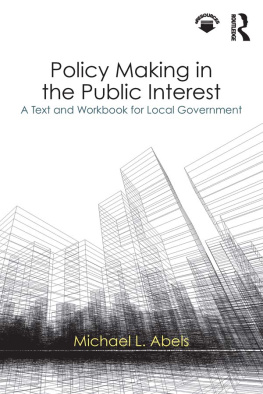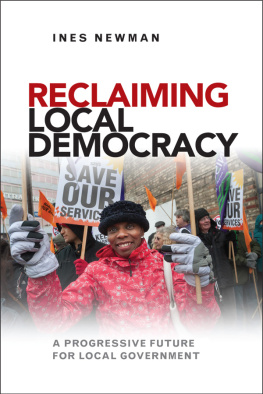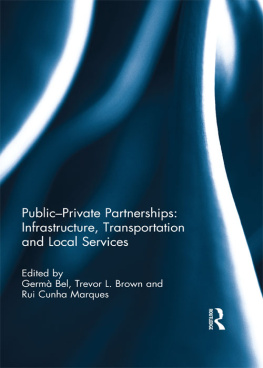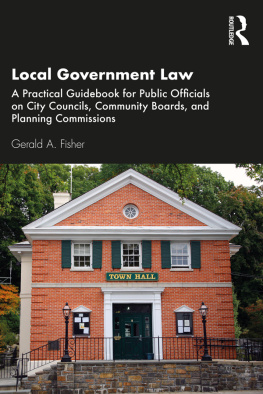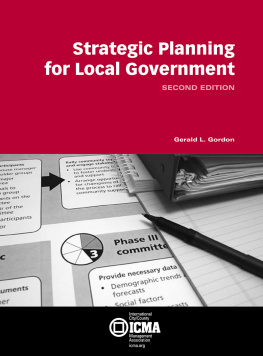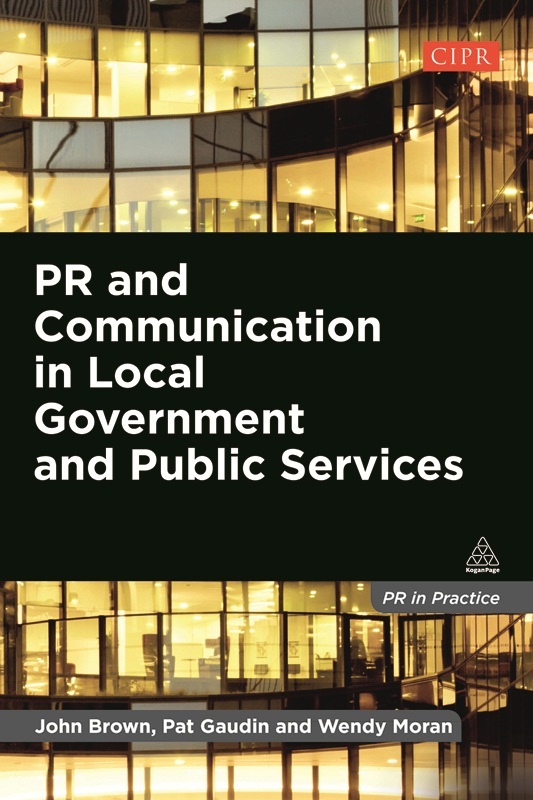Note on the Ebook Edition For an optimal reading experience, please view large
tables and figures in landscape mode. |
This ebook published in 2013 by
Kogan Page Limited
120 Pentonville Road
London N1 9JN
UK
www.koganpage.com
John Brown, Pat Gaudin and Wendy Moran 2013
E-ISBN 978 0 7494 6617 6
CONTENTS
John Brown FCIPR, CIPR Accredited Practitioner, MA (Hons) is an independent PR consultant with over 35 years experience in local government public relations and the media. He was Head of Public Relations for Strathclyde Regional Council (19931996) and subsequently Head of Public Relations and Marketing for Glasgow City Council (19962004). Served as chair of CIPR Scotland group, CIPR council member and in 2012 chaired the CIPR professional practices committee. Awarded the Sir Stephen Tallents medal in 2007.
Pat Gaudin FCIPR, CIPR Chartered Practitioner, MSc PR, Dip CIPR, CIPR Teacher Training Certificate has over 30 years experience in public relations and communication in local government and the local public sector. Most recently Head of Public Relations and Corporate Strategy for Chelmsford Borough Council before becoming an independent consultant in 2006 and adding PR teaching to the mix in 2010. Served as chair of CIPR Local Government Group (20032006), CIPR council member and in 2013 chair of the CIPR professional development committee.
Wendy Moran MCIPR, CIPR Accredited Practitioner, Dip CIPR, is a Senior Lecturer in Communication at Manchester Metropolitan University, specialising in public relations across the local public services. Her background is in local government communication, which she has maintained through her Committee Membership of the Chartered Institute of Public Relations (CIPR) Local Public Services Group (LPSG). She is currently undertaking doctoral studies investigating the role of the PR practitioner in local government.
I t has been 15 years since the last practice-focused textbook on public relations in local government, according to the authors of PR and Communication in Local Government and Public Services , and although that is too long, it has been worth the wait. This book is a gem and should be on the shelf of every practitioner in local government public relations and communication and of everyone who wants to know about it.
John Brown, Pat Gaudin and Wendy Moran have provided a thorough, thoughtful and accessible guide to one of the most challenging sectors of practice that there is. One where the accountabilities and transparencies required are unremitting and where the challenges are unrelenting, especially when resources are being ever squeezed. Yet, the local government sector also provides careers that are deeply satisfying for the professional communicator, in an environment where lives are touched and can be transformed and empowered.
PR and Communication in Local Government and Public Services begins by setting the recent historical context for local government and thereby mapping the changes over the last 20 years. From a service that pre-1995 concentrated on media relations, to one that between 1995 and 2009 focused on corporate communication with strategic plans for council reputation, changing culture, influencing policy and media relations, local government communication is now the guardian of council reputation and authenticity. Setting this platform then allows the authors to take an overview of how the modern public relations and communication team should be structured, pointing out the need for absolute professionalism, with an excellent discussion on the capabilities of practitioners, and indicating how performance can be measured. This leads to a chapter on communicating strategically, with a powerful section on reputation, before the book moves on to examine in detail the various areas of work and expertise demanded of the modern local government communicator.
The chapters that are practice-focused feature many expected topics, such as communicating with citizens and customers, employee relations, media and social media relations, crisis communications and of course putting together an effective campaign. In addition to this, a number of new, emerging and increasingly important subjects are given careful consideration. For example, partnership working and its challenges and opportunities; council branding with a particularly helpful insight on the fact that behaviours are just as important as visual and communicative identity and place promotion. All these topics are dealt with in detail, and with a careful balance between critical and excessive information being maintained throughout.
The authors write authoritatively and with deep knowledge, having all been involved in local government work themselves. There are liberal references to academic and wider texts and documents, many from the public sector, accountancy bodies and government, which inspire confidence in the material. There are numerous, varied and helpful case studies that provide guides to action and several of these are complemented with visual materials, bringing key points to life. Tables and illustrations are scattered throughout the text, helping to crystallise, summarise and re-enforce material, and the quotes introducing each chapter are pertinent and informative. These, combined with the checklists and keywords which round off chapters, draw the learning together in a succinct and memorable way. The book also features several detailed appendices containing essential information for operating in the public sector with its particular constraints: for example, Codes of Practice on local authority publicity in England, Performance Frameworks and the CIPR Code of Conduct.
The last chapter in this excellent book is called Communicating with confidence. It exhorts practitioners to hold three principles dear: public interest, truth and transparency. This should be a mantra not just for the public sector, but for all those who would call themselves public relations professionals. This book is one which seeks to equip its readers with the capabilities required to be an excellent communicator. It is a book that teaches you and then enthuses you to go out and do with confidence.
Professor Anne Gregory
Series Editor
F orty years ago, Geoffrey Lewis, a fellow and past president of the Institute of Public Relations, wrote the first practice textbook, Public Relations for Local Government (IPR/Business Books 1973). Since then there have been several books focusing specifically on local government public relations and marketing in the United Kingdom. We mention especially Tom Richardsons Public Relations in Local Government (Heinemann, 1988), Dick Fedorcio, Peter Heaton and Kevin Maddens guide Public Relations for Local Government (IPR/Longman, 1991), Keiron Walshs Marketing in Local Government (Longman, 1993), David Walkers Public Relations in Local Government (Pearson Education, 1997) and Mark Fletchers Managing Communication in Local Government (Kogan Page, 1999).
This is the first practice textbook on local government public relations in almost 15 years. The first this century. It reflects the current challenges in delivering professional public relations in a changing landscape for both communications and the delivery of local services. In bringing together the chapters for this textbook, the authors are indebted to the support and advice they have received from many colleagues in the CIPR Local Public Services Group, in councils and in other public relations and communication departments across the United Kingdom.

